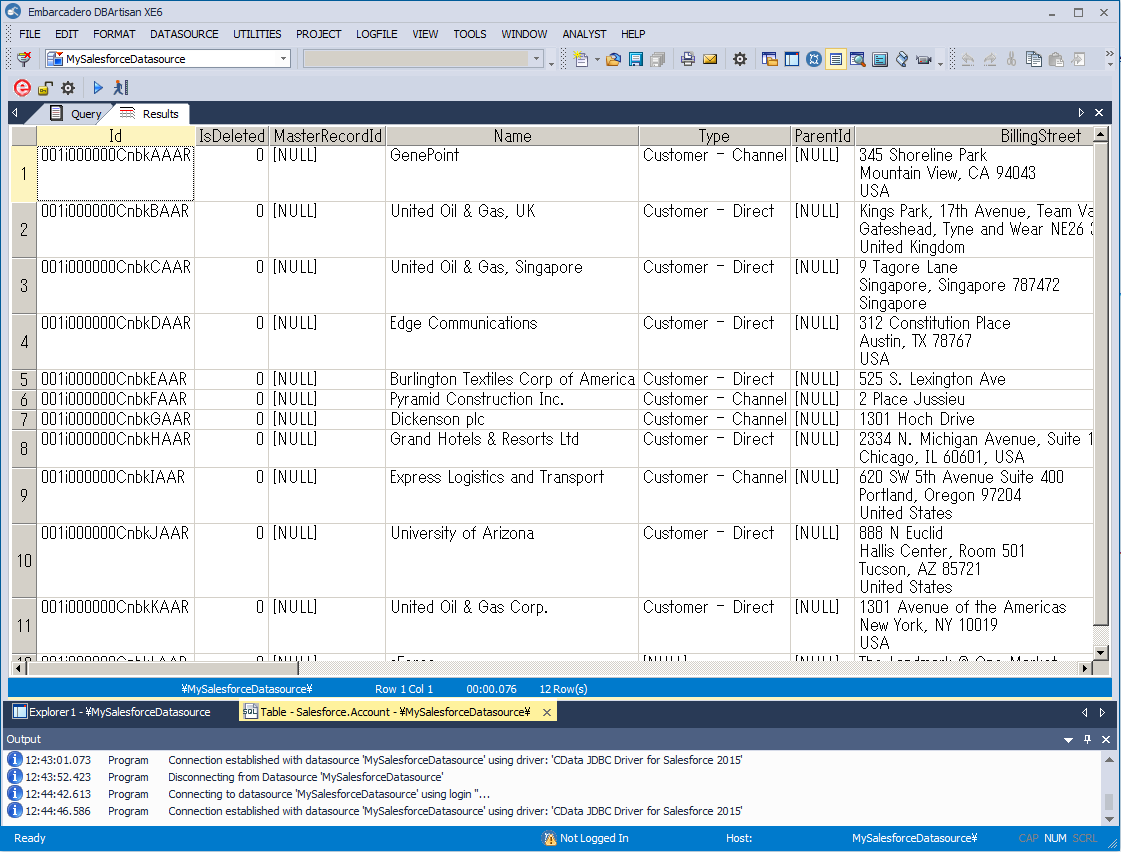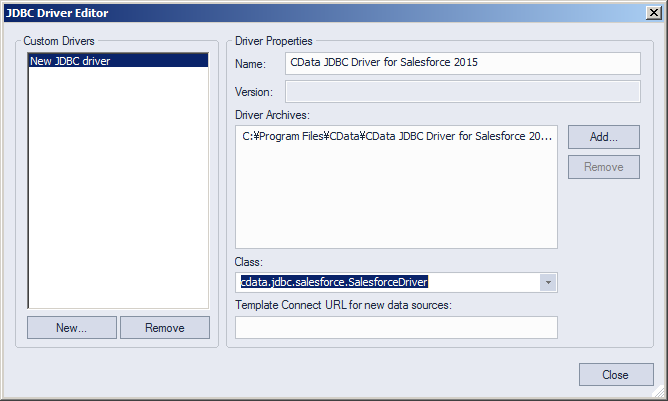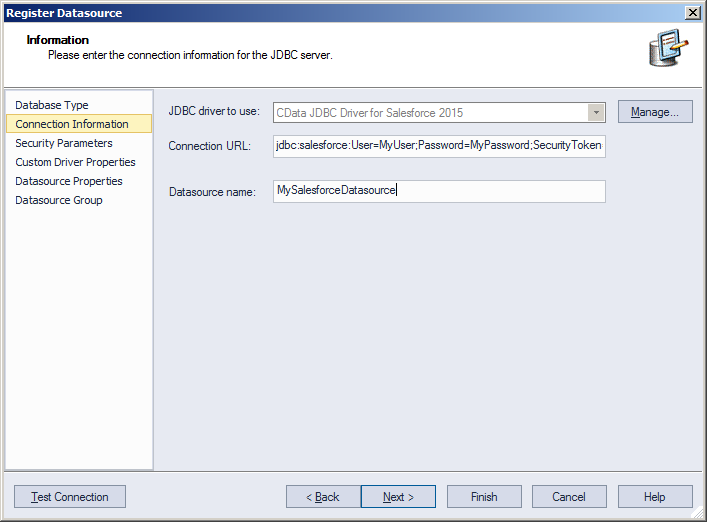Model Context Protocol (MCP) finally gives AI models a way to access the business data needed to make them really useful at work. CData MCP Servers have the depth and performance to make sure AI has access to all of the answers.
Try them now for free →Manage Active Directory Data in DBArtisan as a JDBC Source
Use wizards in DBArtisan to create a JDBC data source for Active Directory.
The CData JDBC Driver for Active Directory seamlessly integrates Active Directory data into database management tools like DBArtisan by enabling you to access Active Directory data as a database. This article shows how to create a JDBC source for Active Directory in DBArtisan. You can then edit data visually and execute standard SQL.
Integrate Active Directory Data into DBArtisan Projects
Follow the steps below to register Active Directory data as a database instance in your project:
- In DBArtisan, click Data Source -> Register Datasource.
- Select Generic JDBC.
- Click Manage.
- In the resulting dialog, click New. Enter a name for the driver and click Add. In the resulting dialog, navigate to the driver JAR. The driver JAR is located in the lib subfolder of the installation directory.
![The JDBC driver definition in the Register Datasource wizard. (Salesforce is shown.)]()
-
In the Connection URL box, enter credentials and other required connection properties in the JDBC URL.
To establish a connection, set the following properties:
- Valid User and Password credentials (e.g., Domain\BobF or cn=Bob F,ou=Employees,dc=Domain).
- Server information, including the IP or host name of the Server, as well as the Port.
BaseDN: This will limit the scope of LDAP searches to the height of the distinguished name provided.
Note: Specifying a narrow BaseDN may greatly increase performance; for example, cn=users,dc=domain will only return results contained within cn=users and its children.
Built-in Connection String Designer
For assistance in constructing the JDBC URL, use the connection string designer built into the Active Directory JDBC Driver. Either double-click the JAR file or execute the jar file from the command-line.
java -jar cdata.jdbc.activedirectory.jarFill in the connection properties and copy the connection string to the clipboard.
![Required JDBC connection properties in the Register Datasource wizard. (Salesforce is shown.)]()
Below is a typical connection string:
jdbc:activedirectory:User=cn=Bob F,ou=Employees,dc=Domain;Password=bob123;Server=10.0.1.2;Port=389; - Finish the wizard to connect to Active Directory data. Active Directory entities are displayed in the Datasource Explorer.
You can now work with Active Directory data as you work with any other database. See the driver help documentation for more information on the queries supported by the Active Directory API.




